Under the jetty
In the jetty aquarium, you’ll find fish that live close to the coast.
-
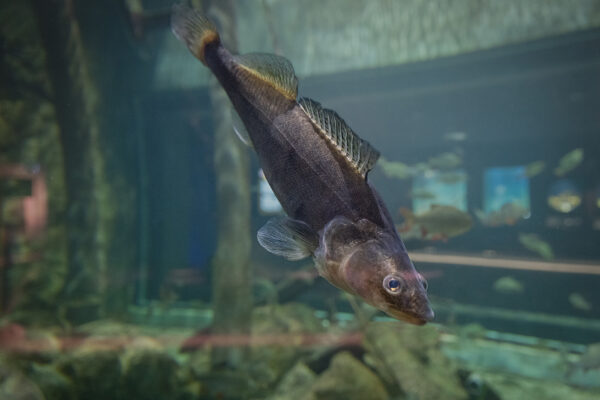
Zander (Sander lucioperca)
The zander is a skilled predator with excellent vision, active mainly during dawn and dusk. It prefers deep waters and uses its speed to ambush prey like roach and bleak.
Scientific name: Sander lucioperca
Length: Up to 1 meter
Lifespan: Up to 20 years
Diet: Primarily other fish
Habitat: Deep lakes and brackish coastal waters -
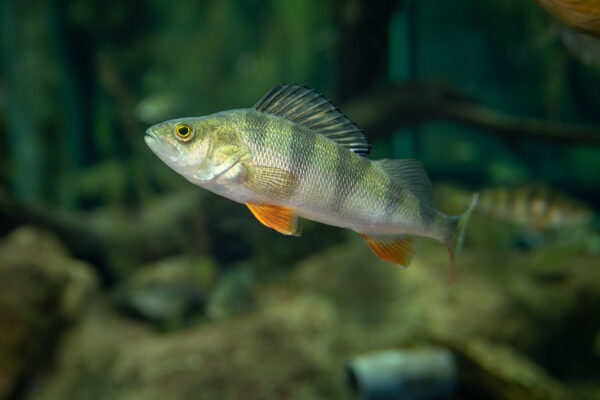
Perch (Perca fluviatilis)
The perch is easily recognized by its vertical stripes and red fins. It’s a common species in the Baltic Sea, often found near vegetation.
Scientific name: Perca fluviatilis
Length: Up to 60 cm
Lifespan: Up to 10 years
Diet: Insects, crustaceans, and smaller fish
Habitat: Lakes, rivers, and coastal areas -
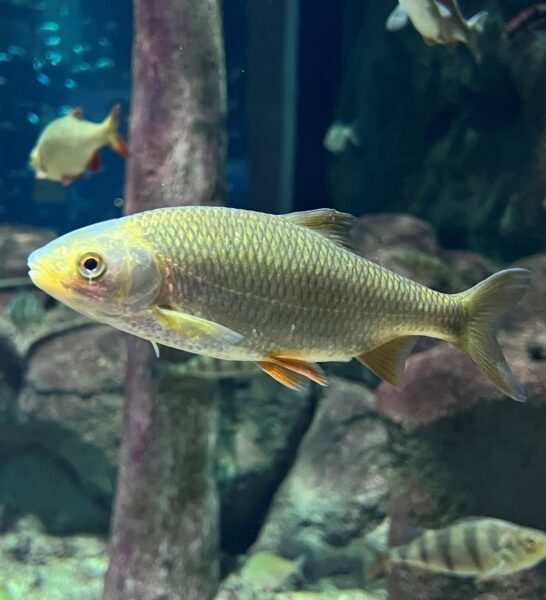
Roach (Rutilus rutilus)
The roach is a silvery fish with red fins, commonly found in schools. It’s adaptable and thrives in various freshwater and brackish environments.
Scientific name: Rutilus rutilus
Length: 15–35 cm
Lifespan: Up to 15 years
Diet: Plants, algae, and small invertebrates
Habitat: Lakes, rivers, and coastal waters
-

Rudd (Scardinius erythrophthalmus)
Often mistaken for the roach, the rudd has a more golden hue and upturned mouth. It prefers vegetated, shallow waters and feeds near the surface.
Scientific name: Scardinius erythrophthalmus
Length: Around 30 cm
Lifespan: 5–15 years
Diet: Aquatic plants, algae, insects, and small fish
Habitat: Shallow lakes and coastal areas -
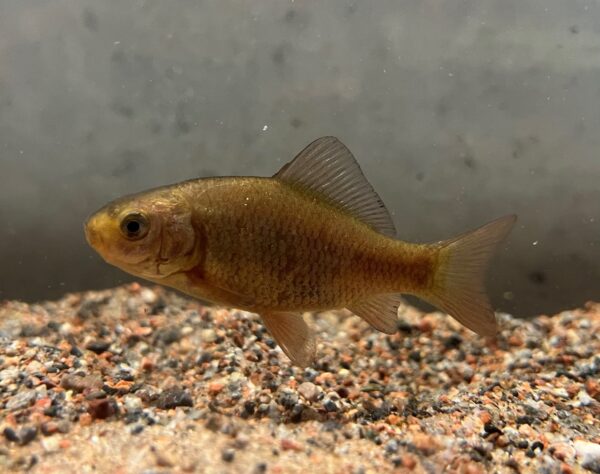
Crucian Carp (Carassius carassius)
The crucian carp is a hardy fish known for surviving in low-oxygen environments by entering a dormant state during winter. It can alter its body shape in the presence of predators.
Scientific name: Carassius carassius
Length: 25–35 cm
Lifespan: 10–20 years
Diet: Insects, worms, and plant material
Habitat: Coastal areas and inland waters -
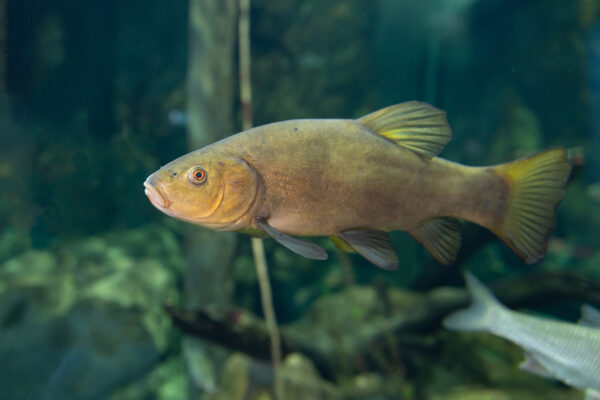
Tench (Tinca tinca)
Known for its olive-green color and thick skin, the tench is a bottom-dweller that feeds at dusk. It’s tolerant of low-oxygen conditions and was historically used for leather.
Scientific name: Tinca tinca
Length: Up to 60 cm
Lifespan: 5–20 years
Diet: Insect larvae, mollusks, and other small animals
Habitat: Lakes, rivers, and coastal bays
-
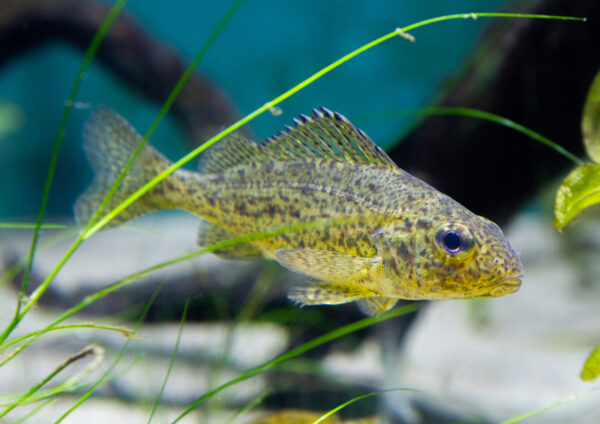
Ruffe (Gymnocephalus cernua)
The ruffe is a small, spiny fish that is active at night. It feeds on insect larvae and small invertebrates, often in deeper waters.
Scientific name: Gymnocephalus cernua
Length: 10–20 cm
Lifespan: Up to 10 years
Diet: Insect larvae and small invertebrates
Habitat: Lakes and coastal areas -
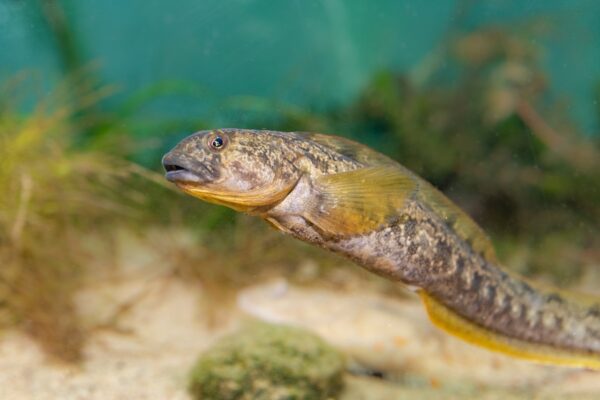
Viviparous Eelpout (Zoarces viviparus)
Unique among fish, the viviparous eelpout gives birth to live young. It prefers cold, brackish waters and feeds on small crustaceans and worms.
Scientific name: Zoarces viviparus
Length: Up to 30 cm
Lifespan: Up to 10 years
Diet: Small crustaceans and worms
Habitat: Brackish coastal waters -
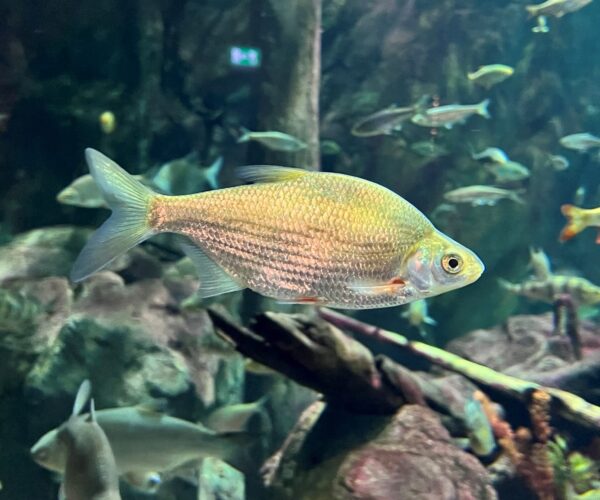
White Bream (Blicca bjoerkna)
The white bream is a silvery fish with a high back, often found near vegetation. It feeds by sifting through the bottom for food.
Scientific name: Blicca bjoerkna
Length: 15–25 cm
Lifespan: 5–15 years
Diet: Small animals, fish eggs, and plant parts
Habitat: Lakes and coastal waters
-
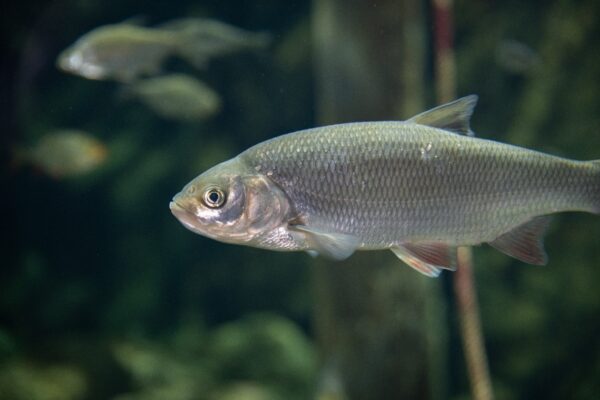
Ide (Leuciscus idus)
The ide is a silvery, robust fish with reddish fins, commonly found in both rivers and brackish coastal waters. It is well adapted to changing salinity and can be found in both freshwater and the Baltic Sea. During the warmer months, ide often form schools near the surface and are known for their adaptability.
Scientific name: Leuciscus idus
Length: Typically 30–50 cm, but can reach up to 85 cm
Lifespan: Up to 23 years
Diet: Omnivorous; feeds on insects, aquatic plants, small crustaceans, and sometimes small fish
Habitat: Clear rivers, lakes, and brackish coastal waters; spawns in shallow areas with gravel or vegetation in spring -
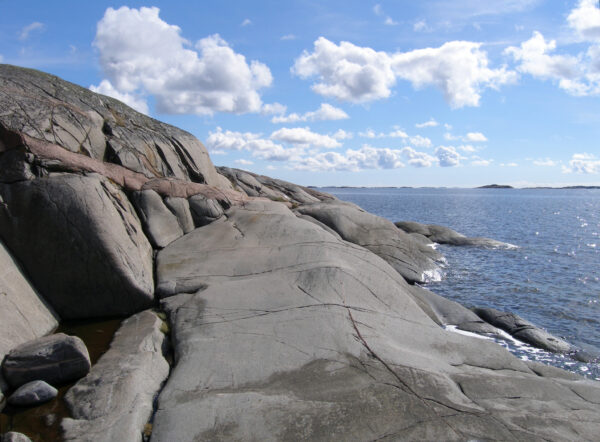
-
